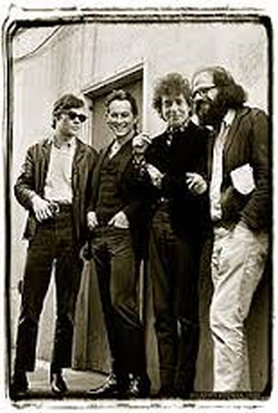
The 1940s Hipsters
The characteristics of the modern day hipster community have changed throughout the years. The history of the hipster subculture is very complex, dating back to the 1940s. The original hipsters got their name from the African word “hepi”, which means “to open one’s eyes” (Faulkner). Early jazz and swing musicians called their fans “hepcats”, however “hepcats” also referred to anyone who was a music insider, someone with much music background. Early hipsters had their own language. Calloway’s 1938 A Hepster’s Dictionary described the language used by many musician, performers, and hepcats. Words like “gravy” to mean profits, and “kick” to mean pocket, clearly set them apart and made hepcats a distinct subculture (Calloway). When modern jazz became popular “hep” became “hip” and the nickname “hepcats” transformed into“hipsters”. Jazz enthusiasts turned their love of the music into a relaxed lifestyle. The 1940s hipster culture was made up of widely lower class, white youth. Many hipsters would visit African American communities for inspiration on fashion, music, dance, language, and drug use (Faulkner). Language is one thing that really defined them to popular culture because their words often defied the commonly perceived definitions and were misleading; such as the word cool, which means popular instead of a cold temperature (Alfrey). This was the start of the hipster ideal of avoiding anything mainstream. The original hipsters turned away from traditional ideas and led a relaxed lifestyle.
The characteristics of the modern day hipster community have changed throughout the years. The history of the hipster subculture is very complex, dating back to the 1940s. The original hipsters got their name from the African word “hepi”, which means “to open one’s eyes” (Faulkner). Early jazz and swing musicians called their fans “hepcats”, however “hepcats” also referred to anyone who was a music insider, someone with much music background. Early hipsters had their own language. Calloway’s 1938 A Hepster’s Dictionary described the language used by many musician, performers, and hepcats. Words like “gravy” to mean profits, and “kick” to mean pocket, clearly set them apart and made hepcats a distinct subculture (Calloway). When modern jazz became popular “hep” became “hip” and the nickname “hepcats” transformed into“hipsters”. Jazz enthusiasts turned their love of the music into a relaxed lifestyle. The 1940s hipster culture was made up of widely lower class, white youth. Many hipsters would visit African American communities for inspiration on fashion, music, dance, language, and drug use (Faulkner). Language is one thing that really defined them to popular culture because their words often defied the commonly perceived definitions and were misleading; such as the word cool, which means popular instead of a cold temperature (Alfrey). This was the start of the hipster ideal of avoiding anything mainstream. The original hipsters turned away from traditional ideas and led a relaxed lifestyle.

